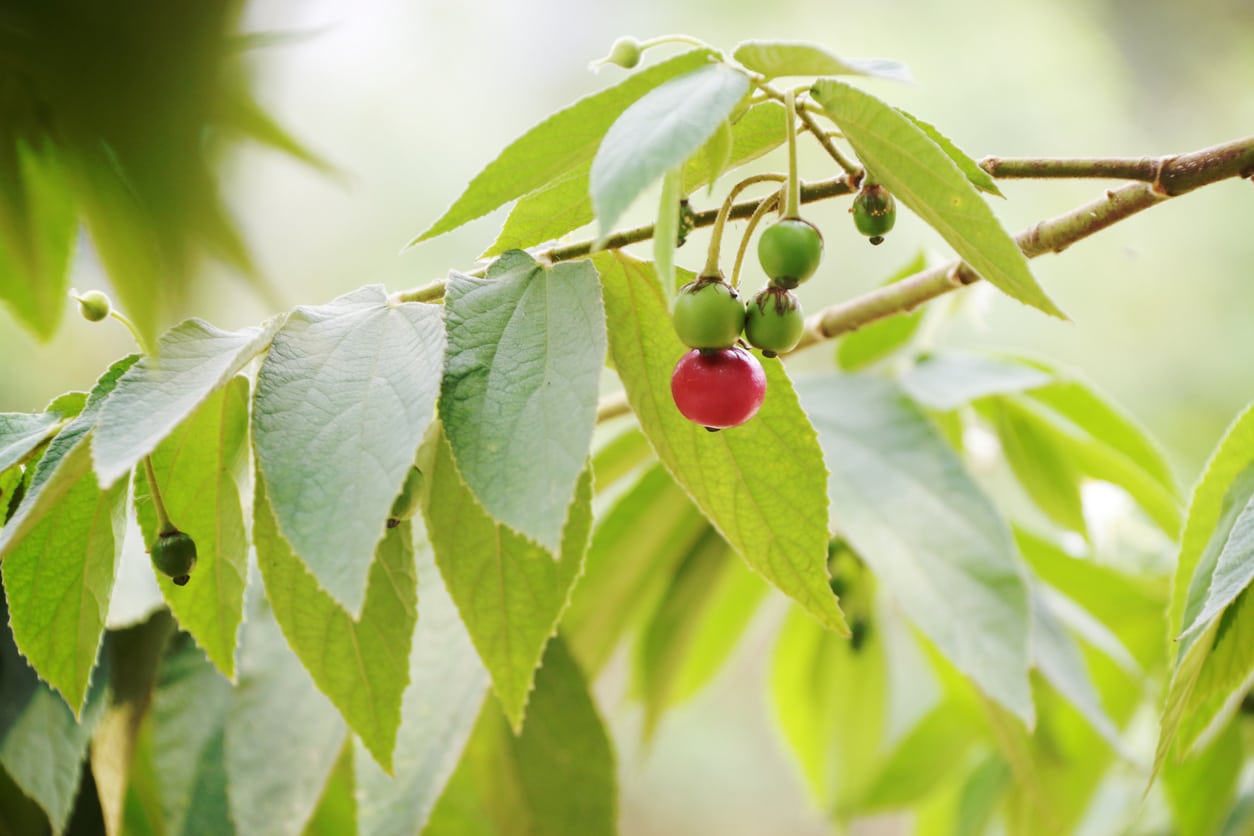What Is A Panama Berry: Caring For Panama Berry Trees


Tropical plants provide endless novelties in the landscape. Panama berry trees (Muntingia calabura) are one of these unique beauties that not only provide shade but sweet, tasty fruits. What is a Panama berry? The plant has numerous indigenous names but for our purposes, it is a fruiting tree of tropical America. It has been nicknamed variously as Chinese cherry, strawberry tree, and Jamaican cherry. Further Panama berry plant info can introduce you to this fabulous exotic plant and its delightful fruits.
Panama Berry Plant Info
Fruit of the Old World Americas are often brought into the warmer regions of the New World and such is the case with Jamaican cherry trees. While the plant is indigenous to warm areas of Central and South America, it has been introduced to other tropical climes such as Florida, Hawaii, and farther afield, the Philippines and India. It has a lovely hibiscus-looking bloom and produces musky, fig noted fruits. This may be your first introduction to Panama berry trees, which can grow 25 to 40 feet (7.5-12 m.) in height with large 2 to 5 inch (5-13 cm.), lance-shaped, evergreen leaves. The extraordinary flowers grow up to ¾ inches (2 cm.) across and are creamy white with prominent bright gold stamen. The flowers last for just one day. Fruits are prolific, ½ inch (1 cm.) round, and green ripening to red. They actually resemble tiny pomegranates when mature. The flavor is said to be very sweet and good fresh, made into jams, or added to baked goods. Fruits are often sold in Mexican markets where they are called capolin.
Uses for Jamaican Cherry Trees
This tall tree would look at home in a tropical landscape. It provides shade, animal habitat, and food. As an ornamental specimen, the exotic blooms alone create quite a show. The fruits dangle like Christmas ornaments on the plant, tempting birds and humans alike. In very warm regions, the tree flowers and fruits year-round, but in areas such as Florida, this is interrupted by several months of winter. Fruits fall easily when ripe and may be collected by laying a sheet under the tree and shaking the branches. These make excellent tarts and jams or can be squeezed for a refreshing drink. An infusion of the leaves also makes a nice tea. In Brazil, the trees are planted over river banks. The dropping fruits attract fish which are easily scooped up by fishermen lounging under the tree's shade.
How to Grow Panama Berries
Unless you live in USDA zones 9 to 11, you will have to grow the tree in a greenhouse. For those in warm climates, select a location with full sun and well-draining soil. The tree thrives on either alkaline or acidic soil and does beautifully even in low nutrient situations. Once established, Panama berry is drought tolerant but young trees will need consistent water as they become established. The seeds may be harvested and planted directly outside in well tilled soil with organic fertilizer and fungicide incorporated. Seedlings will produce fruit within 18 months and grow 13 feet (4 m.) in just three years.
Gardening tips, videos, info and more delivered right to your inbox!
Sign up for the Gardening Know How newsletter today and receive a free copy of our e-book "How to Grow Delicious Tomatoes".

Bonnie Grant is a professional landscaper with a Certification in Urban Gardening. She has been gardening and writing for 15 years. A former professional chef, she has a passion for edible landscaping.
-
 Moody Blooms For Spring: 8 Types Of Black Flowers To Add Drama To Spring Displays
Moody Blooms For Spring: 8 Types Of Black Flowers To Add Drama To Spring DisplaysFrom midnight burgundies to inky violets, several types of black flowers can enrich and embolden a spring display. Try these brooding bloomers for a moody garden
By Tonya Barnett
-
 Can Snake Plants Live Outside? Everything You Need To Know For Snake Plants Al Fresco
Can Snake Plants Live Outside? Everything You Need To Know For Snake Plants Al FrescoSnake plants can live outside given the right conditions, but be careful that they don't take over! Learn the best way to use snake plants in your landscape.
By Mary Ellen Ellis